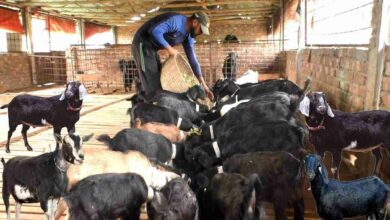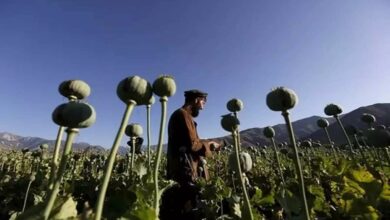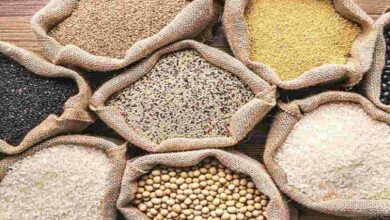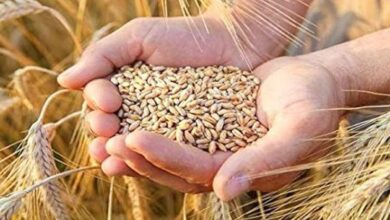Adopt this right plan for irrigation of Rabi crops in changing weather
Irrigation of Rabi Crops: Given the current climatic and environmental changes, plants need more water throughout crucial phases in order to produce an abundance of crops. Lack of water during these phases has a negative impact on agricultural output. The crop goes through several phases at various periods. Therefore, farmers will undoubtedly be able to achieve plentiful yield if they bear in mind the previously stated factors and prepare for irrigation in Rabi crops.

In order for the plants to produce abundantly with the appropriate quantity of water and irrigation water to be utilized appropriately, farmers have learned from this article that irrigation must be done at the appropriate time based on the needs of Rabi crops.
Crop critical stage: During critical phases, plants need more water. As a result, the key stage of crop development occurs when the plants are very vulnerable to water scarcity. The following are the several key phases of Rabi crops:
1. Wheat: Throughout its existence, wheat goes through five phases that are thought to be crucial. In these phases, a lack of water has an impact on production.
Twenty to twenty-five days after wheat is sown, secondary roots or crown roots begin to grow. At this point, the crop’s secondary roots begin to grow on the top surface under the soil and begin absorbing nutrients. At this point, it is critical that the plants get water; otherwise, their development will suffer and their new, tiny roots will not be able to fully develop.
When shoots appear: Forty to forty-five days after seeding, wheat enters this stage. At this point, the plants start to produce shoots. At this point, irrigation increases the quantity of shoots.
60 to 65 days after seeding is when the knot development stage in stems occurs. At this point, irrigation controls both plant growth and crop yield.
When flowers appear: 85 to 90 days after seeding, wheat crops begin to generate flowers. At this point, irrigation lengthens and increases the number of ears.
Grain during the milky stage: This stage of the crop starts 110–115 days later. During this period, irrigation has a positive impact on grain filling, which causes the grain to fully grow. Therefore, making irrigation arrangements is crucial.
Water availability determines how many irrigations are necessary. Irrigation may be carried out according to availability if there is no full irrigation facility or if irrigation is not accessible at all of the previously listed phases.
30 to 35 days after seeding, if water is available for a single irrigation.
Two irrigations: (1) when secondary roots or crown roots form, and (2) when flowers show up
Three irrigations: (1) when secondary roots or crown roots sprout; (2) when stem nodules form; and (3) when flowers bloom
During the latter stages of sprouting, when nodules develop in the stems, when crown roots or secondary roots emerge, and when flowers bloom, there are four irrigations.
2. Barley: Compared to wheat, barley needs less watering. Barley can withstand droughts better than other crops. Fertile crops are the main reason barley is grown. Barley crops typically need three irrigations.
It is adequate to water 30 days after sowing, 60 to 75 days after sowing, and then again at the milky stage. Two irrigations, 30 to 35 days after planting, and a second irrigation at the milky stage are excellent for tall-growing cultivars. Irrigation should be decreased if there is rain during the Rabi season. If there is enough water for a single irrigation, it should be applied 30 to 35 days after the active shoots are sown.
3. Gram: Rain-fed regions are often used to grow gram crops. It is advised to give gram crops two irrigations. The first irrigation should be done 40–50 days after sowing, when the plant has established a blossom bud, and the second irrigation should be done 70–75 days after planting, when the grains have formed in the pod, to ensure a good yield.
Lentil: Although lentils are often grown in unirrigated settings, it is preferable to irrigate 45 to 50 days after planting in order to prevent blooming and 60 to 65 days after pod formation if water is available. Irrigation should be done every 60 to 65 days if there is just one available. Very little water is needed for lentils. Light watering is thus always recommended; otherwise, the plants’ vegetative growth will rise, resulting in a loss in yield.
Peas: Both native and developed pea cultivars need two irrigations. It is recommended to do the first irrigation during the blooming stage and the second irrigation during the pod production stage. Light irrigation is ideal at all times. in order to prevent water logging and stagnation, which would negatively impact crop productivity.
Mustard and Toria: In general, irrigation moisture is also used to develop mustard and toria. The mustard crop needs two irrigations to provide a satisfactory yield. It is recommended to do the first watering before blooming and the second irrigation after the grains have developed in the pod. Good yield results with one more irrigation during the vegetative development stage if there is enough supply of water.
Quantity of irrigation water: Only when the amount of water used for irrigation is as little as necessary can it be utilized properly; otherwise, the crop will suffer. Because too much water penetrates into the soil and hinders air circulation, the first irrigation should be light to keep the top surface of the soil wet and facilitate germination. Subsequent irrigations should not go deeper than 5 to 6 cm.
- Precautions: Make sure that each bed receives the same quantity of water while irrigating.
- Light watering is recommended if the crop is in the milky stage.
- Only irrigate in a quiet area since people are afraid of plants toppling over in a windstorm.
- Because of its great water-holding capacity, water stays in heavy soil for longer. Reduce the amount of irrigation in such circumstances.
- Regular watering is necessary for sandy soil.
- Sprinkler irrigation is the best option for sandy soils in order to reduce water loss from leaching.
In this sense, we will undoubtedly be able to achieve plentiful output if we plan irrigation for Rabi crops while taking into account the farmer’s views. In addition, we will contribute to environmental conservation by reducing needless water usage.





